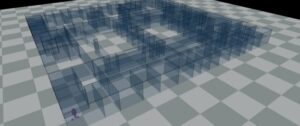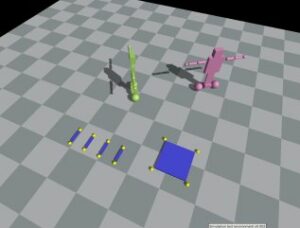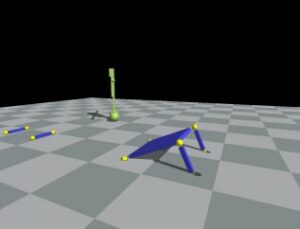Back: Hobbies
My previous MIT Media Lab projects page was hosted from 2006 to 2013 at the lab, and can still be seen at the Internet Archive. Please excuse the mess as I reorganize the content.
Reflective Programming Language & Cognitive Architecture
MIT Media Lab: Funk2, Substrate for Accountable Layered Systems (SALS)
Where do human goals come from? We are working with the theory that the transfer of social goals in humans occurs through the inheritance of knowledge from parents and others. The performance and communication of social behaviors is a critical process in cultural evolution. We are designing and building models of behavior inheritance and social learning in human children. We are interested in modelling the inheritance and learning of domain-specific action skills, domain-specific goals, reflective control of which goals to pursue now, self critics, and social critics. This work is inspired by Marvin Minsky’s Model-6 layered reflective theory of mind, published in his recent Emotion Machine book. We hope to make part of this Model-6 theory into a working and testable model for use by other scientists in the business of trying to understand complex and potentially powerful human emotions, such as Guilt and Pride. Our current goal is in understanding these complex mental processes.
Neural Models of Mind
MIT Media Lab: NeuralMoM (2006 — 2007)
Commonsense Probabilistic Reasoning
MIT Media Lab: Learning Commonsense Human-language Descriptions from Temporal and Spatial Sensor-network Data
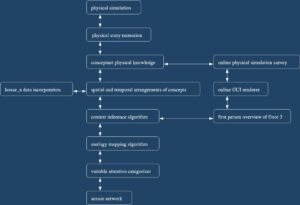
lifenet-0.28-2006_09_29.tar: Power spectrum calculation for audio sensor streams added. Equiprobable clusters of powerspecta provided by Kohonen neural network. Automatic “concept” identification in text streams added. Automatic “phenomena” identification in symbolic sensor streams added. N-dimensional mixtures of Gaussians inference added for reasoning over specific temporal and spatial scales. (2006, September 29)
lifenet-0.1-2006_10_26.tar: Binary Markov Random Fields implemented to reason about logical relationships. (2004, September 10)
Commonsense Agent Simulation
MIT Media Lab: Roboverse (2000 — 2005), Isisworld (2006 — 2009), Muddy Carol (2010)
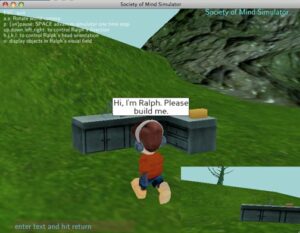 Goal-oriented problem solving, inference, and analogical inference tools have been developed for a variety of commonsense reasoning applications by the Common Sense Computing group. The IsisWorld project is visualizing as well as simulating the physical semantic relationships between objects in a commonsense physical world.
Goal-oriented problem solving, inference, and analogical inference tools have been developed for a variety of commonsense reasoning applications by the Common Sense Computing group. The IsisWorld project is visualizing as well as simulating the physical semantic relationships between objects in a commonsense physical world. 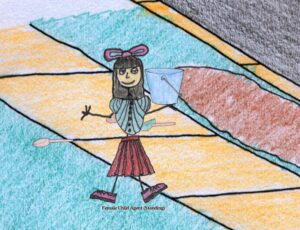 We believe this tool will be very useful for building and debugging commonsense agents that learn from their interactions with a complex human world. For example, imagine that we are building an agent that wants to experiment in order to learn how to make a cup of tea.
We believe this tool will be very useful for building and debugging commonsense agents that learn from their interactions with a complex human world. For example, imagine that we are building an agent that wants to experiment in order to learn how to make a cup of tea.
Perhaps our agent knows a recipe, including the ingredients for such a process, but does not know how long the process might take.
Such an agent may be able to experiment in a commonsense simulation like IsisWorld in order to realize that one needs to walk around a kitchen, fill a pot with water, boil the water on the stove, and let the tea steep and cool in a cup before it is at a safe temperature for drinking.
We believe that having a visual simulation tool will be invaluable in helping us to debug the physical qualitative physical commonsense reasoning processes that are currently being developed by the MIT Media Lab’s Software Agents Group.
